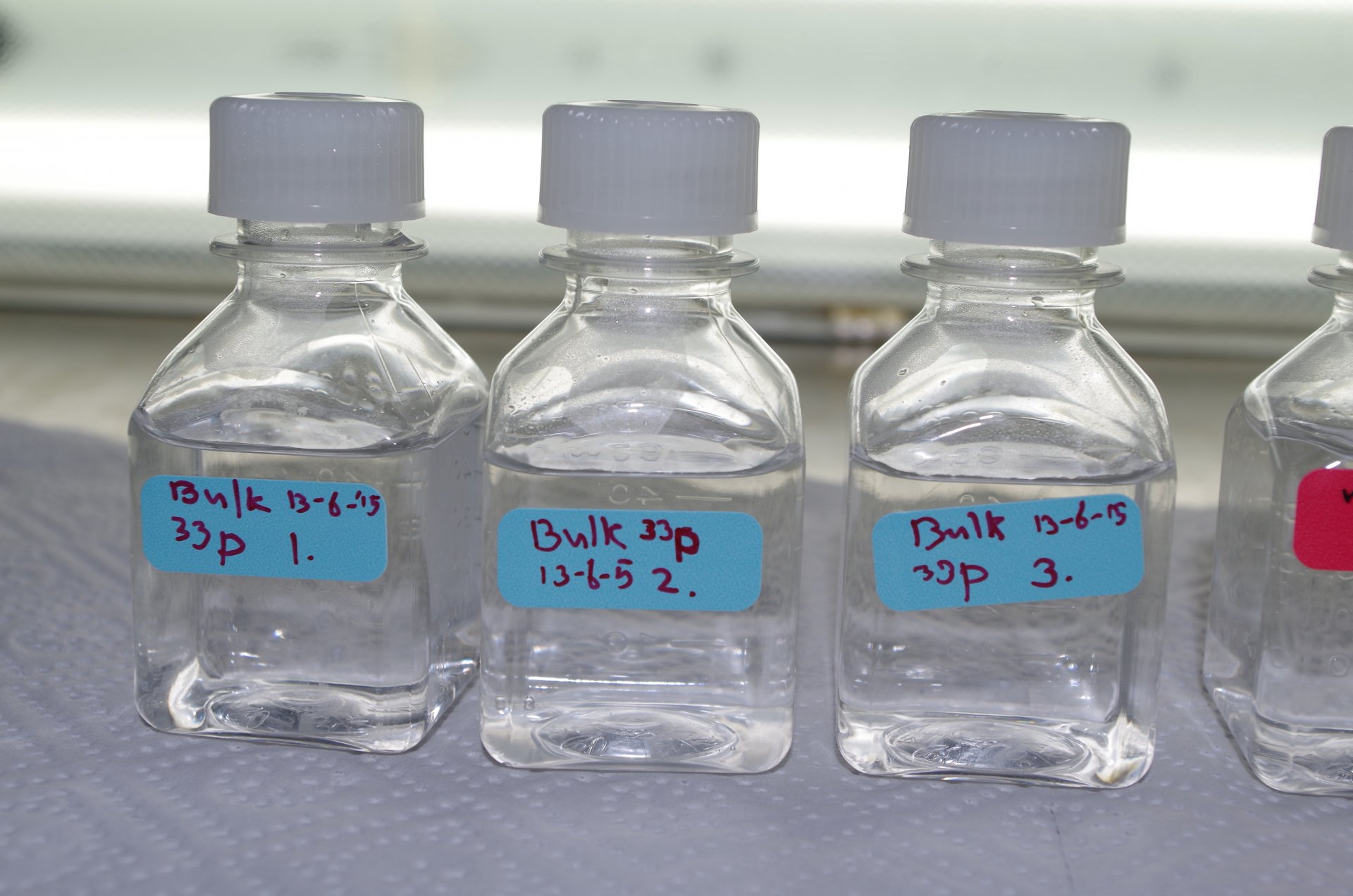- Departments
- Department of Biogeochemistry
- Biogeochemistry Group
- People
- Tim Ferdelman
- Research
- Phosphorus Cycling
Phosphorus Cycling

While the broad outlines of phosphorus cycling in the ocean are known, a mechanistic understanding of P cycling, especially at or near the sediment-water interface, is lacking. This has far-reaching implications, in part because fundamental conclusions about nutrient cycling and nitrogen fixation are based on the N:P ratios and Fe:P ratios. Slight changes in the C:P ratios of particulate material delivered to the sediment, or the C:P ration of particles exported to the euphotic zone may strongly propagate through the microbial food webs (Deutsch et al., 2012).
A tool for examining P biogeochemistry is these systems is the use of 33P radiotracer on both surface sediments (see Goldhammer et al., Nature Geoscience, 2010) and in the subeuphotic water column. In Geophysical Research Letters, (Sokoll et al., GRL 2017; doi:10.1002/2016GL072183) we describe experiments using radiolabeled phosphate that show the rapid uptake of phosphate into particles in sub-euphotic waters off the coasts of Mauritania and Namibia. The experiments and analysis demonstrate that this uptake is biologically mediated, and thus P cycling in the dark ocean is more intense than originally thought.
In Meador et al., 2020 (Science Advances) we collaborated with Travis Meador and Martin Koenneke (MARUM) to evaluate P and C uptake by the marine nitrifying archaea Nitrosopumilus maritimus with the help of radiotracers 33P and 14C.
We have also developed a method to image 33P uptake using nanoSIMS in Schoffelen et al. 2018;Using this method, we could show that key cyanobacteria rely on different forms of phosphorus throughout the summer bloom in the Baltic Sea.